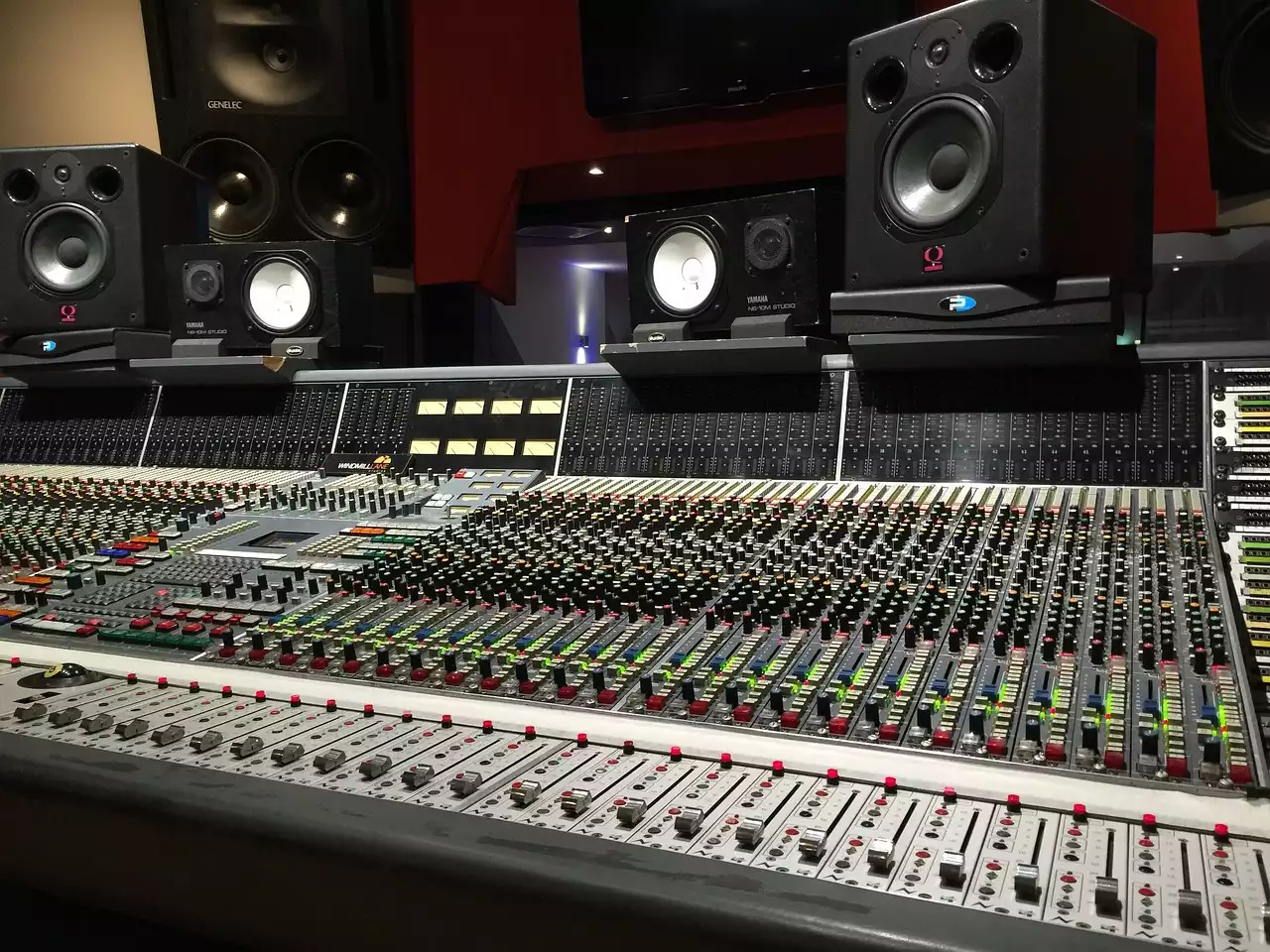1st type of sound: Audible sound
Audible sound is the type of sound that falls within the range of human hearing, typically between 20 and 20,000 hertz. It is the sound that we are most familiar with and that shapes our everyday experiences. Audible sound can be both pleasant and unpleasant, depending on the source and the context in which it is heard.
One of the key characteristics of audible sound is that it travels in waves. These waves are created by vibrations, which can be caused by a variety of sources such as musical instruments, voices, or even natural phenomena like thunder. When these waves reach our ears, they are transformed into electrical signals that are sent to our brain, allowing us to perceive and interpret the sound.
20 - 20,000 Hz Audio Sweep | Range of Human Hearing
Audible sound has a wide range of applications in our lives. It is essential for communication, allowing us to convey information and express emotions through speech and music. In addition, sound plays a crucial role in our sense of spatial awareness, helping us determine the location and distance of objects in our environment. It also contributes to our overall sensory experience, enhancing the atmosphere and ambiance of various settings.
2nd type of sound: Infrasound
Infrasound refers to sound that is below the range of human hearing, typically below 20 hertz. While we may not be able to hear infrasound, it can still have powerful effects on our bodies and emotions. In fact, some studies suggest that infrasound can induce feelings of fear, anxiety, and even paranormal experiences in humans.
Infrasound is produced by a variety of natural and man-made sources. Natural sources include earthquakes, volcanic eruptions, and even the movement of ocean waves. Man-made sources of infrasound include industrial machinery, wind turbines, and even some musical instruments. Despite being inaudible to us, infrasound can travel long distances and penetrate through buildings, making it difficult to escape its effects.
While the exact mechanisms by which infrasound affects our bodies and emotions are still not fully understood, researchers believe that it may have to do with the way it interacts with our internal organs and neural pathways. Some studies have suggested that infrasound can stimulate the production of stress hormones, leading to feelings of unease and discomfort.
Audible and Inaudible Sounds
3rd type of sound: Ultrasound
Ultrasound is the type of sound that is above the range of human hearing, typically above 20,000 hertz. Unlike infrasound, ultrasound has a wide range of applications in various fields. One of the most well-known applications of ultrasound is in medical imaging, where it is used to visualize internal organs, monitor pregnancies, and detect abnormalities.
In addition to medical imaging, ultrasound is also used in a variety of other industries. For example, it is used in industrial testing to detect flaws in materials and structures. It is also used in animal communication, as many animals can hear and produce ultrasonic sounds that are beyond our range of hearing.
The use of ultrasound in medical imaging is based on the principle of echolocation. Ultrasonic waves are emitted from a transducer and then bounce back when they encounter different tissues or structures in the body. These reflected waves are then converted into images, allowing healthcare professionals to visualize and diagnose various conditions.
How Does Ultrasound Work?
Differences between the three types of sound
While audible sound, infrasound, and ultrasound are all forms of sound, there are some key differences between them. One of the main differences lies in their frequency ranges. Audible sound falls within the range of human hearing, which is typically between 20 and 20,000 hertz. In contrast, infrasound is below this range, and ultrasound is above it.
Another difference between the three types of sound lies in their applications. Audible sound is the most commonly experienced type of sound and is essential for communication, spatial awareness, and overall sensory experience. Infrasound, despite being inaudible, can still have powerful effects on our bodies and emotions. Ultrasound, on the other hand, is used in various fields such as medical imaging, industrial testing, and animal communication.
In terms of their wave characteristics, audible sound, infrasound, and ultrasound can be categorized into different types of waves. Audible sound is a longitudinal wave, meaning that the particles in the medium vibrate parallel to the direction of the wave. Infrasound and ultrasound, on the other hand, can be both longitudinal and transverse waves, depending on the specific circumstances.
In conclusion, sound is not just a single entity but rather a diverse and fascinating phenomenon. Understanding the three types of sound—audible sound, infrasound, and ultrasound—allows us to better appreciate and comprehend the world of sound. From the familiar sounds that shape our everyday experiences to the inaudible vibrations that can have profound effects on our bodies and emotions, sound truly has the power to captivate and amaze us. So the next time you hear a bird's song or feel the rumble of thunder, take a moment to think about the incredible variety of sounds that surround us and the many wonders they hold.
Type 1: Infrasound - The Silent Power
The first type of sound is known as **infrasound**. Infrasound refers to sound that is below the range of human hearing, typically below 20 hertz. Despite being inaudible to us, infrasound can still have powerful effects on our bodies and emotions.
The FEAR Frequency: Infrasound
Characteristics of Infrasound
Infrasound waves are characterized by their long wavelengths, which can travel long distances and penetrate obstacles like walls and buildings. This unique property makes infrasound ideal for communication over large distances. In fact, many animals, such as elephants and whales, use infrasound to communicate with each other across vast distances.
Applications of Infrasound
In addition to its role in animal communication, infrasound also plays a significant role in natural phenomena. For example, volcanic eruptions, earthquakes, and even meteor showers produce infrasound waves that can be detected and studied by scientists. Infrasound is also used in various scientific fields, such as seismology and meteorology, to monitor and study these natural events.
The Impact of Infrasound on Humans
While we may not be able to hear infrasound, it can still have an impact on our bodies and emotions. Some studies suggest that exposure to infrasound can cause feelings of unease, fear, or even ghostly apparitions. It is believed that certain frequencies of infrasound can stimulate the human vestibular system, leading to these unusual sensations.
Type 2: Ultrasound - Beyond Human Hearing
On the other end of the spectrum, we have **ultrasound**. Ultrasound refers to sound that is above the range of human hearing, typically above 20,000 hertz. Ultrasound has a wide range of applications, from medical imaging to animal communication.
Characteristics of Ultrasound
Ultrasound waves have shorter wavelengths compared to audible sound, allowing them to produce detailed images and penetrate different materials. This property makes ultrasound ideal for medical imaging purposes, such as ultrasound scans during pregnancy or diagnosing internal injuries. In the animal kingdom, bats are known for their ability to use ultrasound for navigation and finding prey.
Applications of Ultrasound
One of the most well-known applications of ultrasound is in the field of medicine. Ultrasound technology is used for diagnostic purposes, enabling doctors to visualize internal organs, monitor pregnancies, and detect abnormalities. Ultrasound is also used in physical therapy, where it promotes tissue healing and reduces inflammation.
Additionally, ultrasound is used in various industries, such as cleaning delicate objects, measuring distances, and even in underwater communication for marine research.
Ultrasound in Animal Communication
While we humans may not be able to hear ultrasound, many animals can. Dolphins, for example, use ultrasound to communicate with each other and navigate their surroundings. This ability allows them to navigate through dark waters and locate prey with remarkable precision.
Type 3: Audible Sound - The Symphony of Life
Finally, we have audible sound, which falls within the range of human hearing, typically between 20 and 20,000 hertz. This is the sound that we are most familiar with and that shapes our everyday experiences.
The Characteristics of Audible Sound
Audible sound waves are what we perceive as sound, whether it's the melody of a song or the sound of a car engine. These waves travel through the air and vibrate our eardrums, allowing us to perceive sound. Audible sound waves have different characteristics such as frequency, amplitude, and timbre, which give each sound its unique qualities.
Sound Example 1: Music
Music is a perfect example of audible sound and its infinite possibilities. From classical symphonies to modern pop hits, music has the power to evoke emotions, bring people together, and express the deepest of human experiences. The combination of different instruments, melodies, and harmonies creates a rich tapestry of audible sound that resonates with our souls.
Sound Example 2: Nature Sounds
Nature is a treasure trove of audible sound. From the peaceful rustling of leaves in a forest to the crashing waves on a beach, nature sounds have a calming and rejuvenating effect on our well-being. The chirping of birds, the gentle flow of a river, and the sound of raindrops falling on the ground all contribute to the symphony of life that surrounds us.
Relaxing Music with Nature Sounds
Sound Example 3: Speech and Voice
Speech and voice are fundamental forms of audible sound that shape our everyday interactions. The spoken word carries meaning, emotions, and intentions, allowing us to communicate and connect with one another. Whether it's a heartfelt conversation with a loved one or a powerful speech that moves nations, the power of audible sound in the form of speech is truly remarkable.
In conclusion, sound is a fascinating phenomenon that encompasses various types and forms. Understanding the distinctions between infrasound, ultrasound, and audible sound allows us to appreciate the intricate nature of sound and its impact on our lives. From the silent power of infrasound to the beyond-human-hearing capabilities of ultrasound, and the symphony of audible sound that surrounds us, each type of sound contributes to the richness of our sensory experiences. So, take a moment to listen, to truly immerse yourself in the world of sound, and discover its many wonders.








